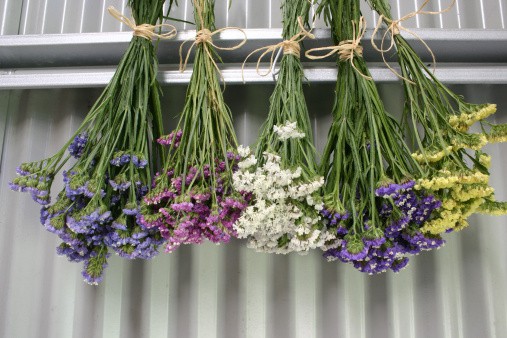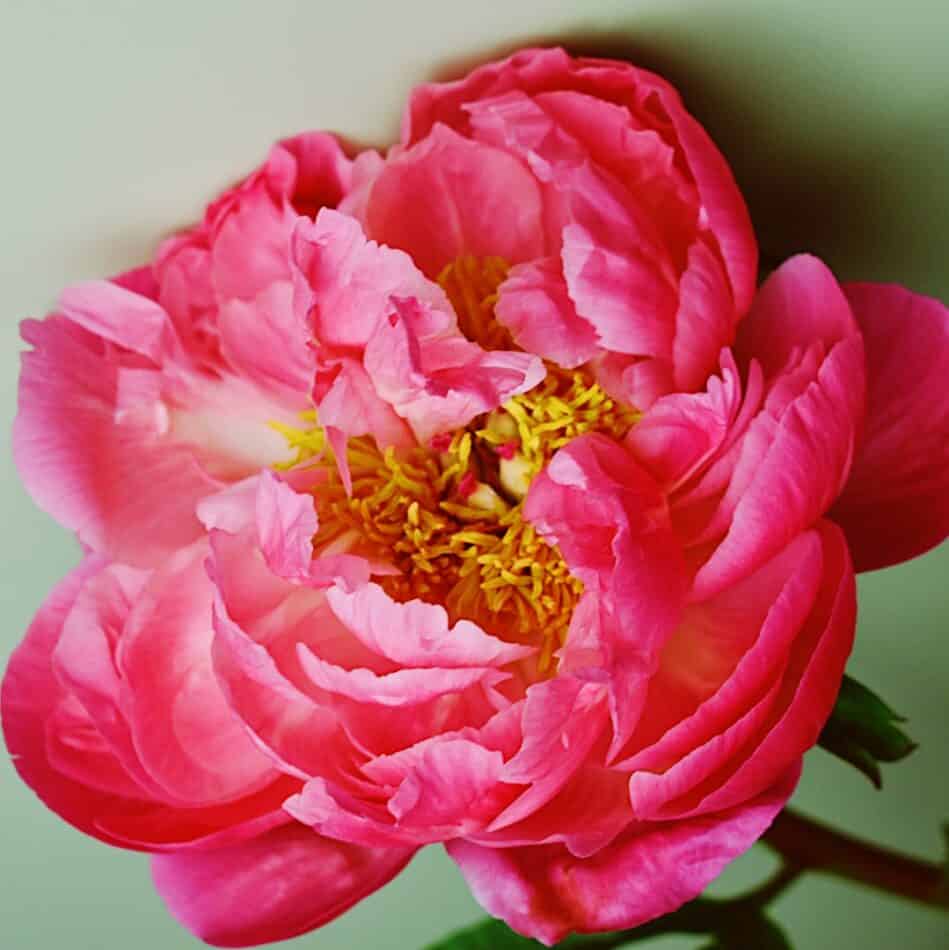Wavyleaf Sea Lavender (Limonium sinuatum) is an erect growing short-lived perennial that is sometimes grown as an annual. Popular for its thick clusters of small, funnel-shaped flowers on winged stems, it blooms from summer to early fall in a variety of colors such as lavender, pink, violet, rose, yellow, orange, and white. These flowers are renowned for their ability to retain their color even when dried, and their high salt tolerance makes them especially useful for coastal gardens.
Family and Type
Limonium sinuatum is a perennial plant that belongs to the Plumbaginaceae family, which includes about 800 species of flowering plants. The family is known for its diverse range of species and includes shrubs, herbs, and climbers. The Plumbaginaceae family is also known for its medicinal properties, and several members of the family have been used in traditional medicine. Limonium sinuatum, commonly known as the Statice flower, is known for its beautiful, long-lasting blooms and is a popular choice for cut flower arrangements. The plant is native to the Mediterranean region but is now widely cultivated around the world for its ornamental value.
Planting and Growing
Wavy-leaf Sea Lavender is an easy-to-grow flower. It grows best in full sun to partly shady locations, in well-drained soils, and it is drought and salt-tolerant. Hardy in zones 6-11, it can withstand both cold and hot temperatures. It has very little soil requirements, and in fact needs a soil which is alkaline to slightly acidic. It also does not require a lot of water, and light irrigation during dry spells is enough.
Meaning and Symbolism
Being an effortlessly manageable plant that washes new color into old gardens, Wavyleaf Sea Lavender is often connected to perseverance, joy and positivity. This flower is often associated with attitudes of never giving up and always finding ways to make things work despite the difficulties. People will often give this flower as a symbol of hope, faith and love of simple things that nature has to offer
History, Mythology, and Religious Significance
Wavyleaf Sea Lavender has been used in folk medicine since antiquity. It was particularly known for its antiseptic and astringent properties and has been used to treat various ailments from skin issues to menstrual irregularities. Ancient cultures often prized this flower for its miraculous curative abilities and believed it to be sent from the gods to provide mankind with healing power. In the ancient Greek language, its name “Limonium” implies that it was believed to be a cure for all ills. The flower is also symbolic in various Mongolian and Tibetan customs, appearing on flags and floral tributes that are meant to represent courage and strength against adversity.
Flower Varieties and Their Defining Characteristics
Limonium sinuatum is just one of the many varieties of the Sea Lavender family. Other varieties include Limonium binervosum and Limonium perezii.
- Limonium binervosum, sometimes called ‘Rumdul’, is a deciduous perennial that grows in dense clumps and produces rosy-purple plumed flowers with yellow centers.
- Limonium perezii, also called‘Verdant Rose’, is an evergreen, rhizomatous perennial with reddish purple flowers, often with a bronzy sheen.
How to Pot and Repot
For the best results, Wavyleaf Sea Lavender should be planted in containers in the early spring, just as the flowers are beginning to bloom. Fill the pots with a well-draining soil mix, and water them regularly. Place the pots in a location with at least six hours of direct sunlight or supplement with a grow light. You can also start the flowering process by gently shaking the container to encourage flowers to bloom. If necessary, repot into slightly larger containers every two to three years, as the sea lavender grows rapidly.
How to Prune
Pruning is an important step in keeping Wavyleaf Sea Lavender healthy and productive. To encourage more flowering, you should remove the dead flower stems, such as the ones with no flowers or those with wilted flowers. You can cut them right down to the base. When using hand pruners, ensure that the blades are clean to prevent the spread of diseases. Pruning should be done in the late winter and early spring, when the plant is dormant.
How to Propagate
Propagating Limonium sinuatum is best done with seeds or basal cuttings. To propagate from seeds, fill a shallow container with a light, well-draining soil mix and sow the seeds on top, evenly spaced. Mist with a spray bottle and cover the tray with clear plastic or a sheet of glass to keep the moisture in. Place in a brightly lit area, but avoid direct sunlight. As the seedling starts to emerge, keep the temperature at around 70°F.
Basal cuttings are an easier but slower way to propagate Sea Lavender. To do this, in early spring, take a cutting of a mature Wavyleaf Sea Lavender and use sharp shears to make the cutting, avoiding any flowering stems. Once the cutting is taken, place it in a tray filled with moist soil, making sure that the leaves are not covered. Place it in a location with bright light, but no direct sun. Keep the soil consistently moist and after 3-4 weeks, it should start to root.
Common Pests and Diseases
While Wavyleaf Sea Lavenders require very little maintenance, they are still susceptible to diseases and pests. Fungal diseases, such as mildew, can develop in damp conditions, so it is important to ensure that your plants have adequate airflow and adequate drainage. Leaf spot diseases can also occur due to mildew or a lack of water. Aphids, snails, and slugs can also plague your plant, so it is important to be sure that your plant is in an area that has little of these pests.
Three Frequently Asked Questions About Limonium Sinuatum
1. Is Wavyleaf Sea Lavender deer resistant?
Yes, this flower exhibits a natural resistance to deer, making it perfect for gardeners who live in areas where deer are abundant.
2. How much sun does Wavyleaf Sea Lavender need?
It is best suited for full or partial sun, with at least 6 hours of sunlight.
3. How often does it need to be watered?
While it does not need to be watered frequently, it should be watered in times of drought. Light irrigation during dry spells is sufficient.
Fact Sheet
| Flower | Limonium Sinuatum |
|---|---|
| Family | Plumbaginaceae |
| Plant Type | Perennial |
| Mature Size | 2-3ft in height and spread |
| Sun Exposure | Full Sun to Partial Shade |
| Soil Type | Well-drained soil |
| Soil pH | Alkaline to slightly acidic |
| Bloom Time | Summer to Early Fall |
| Flower Color | Lavender, pink, violet, rose, yellow, orange, and white |
| Hardiness Zones | 6 – 11 |
| Native Area | Southern Europe |
What we love from Amazon this week
Buy these wonderful flowers directly from Amazon:















